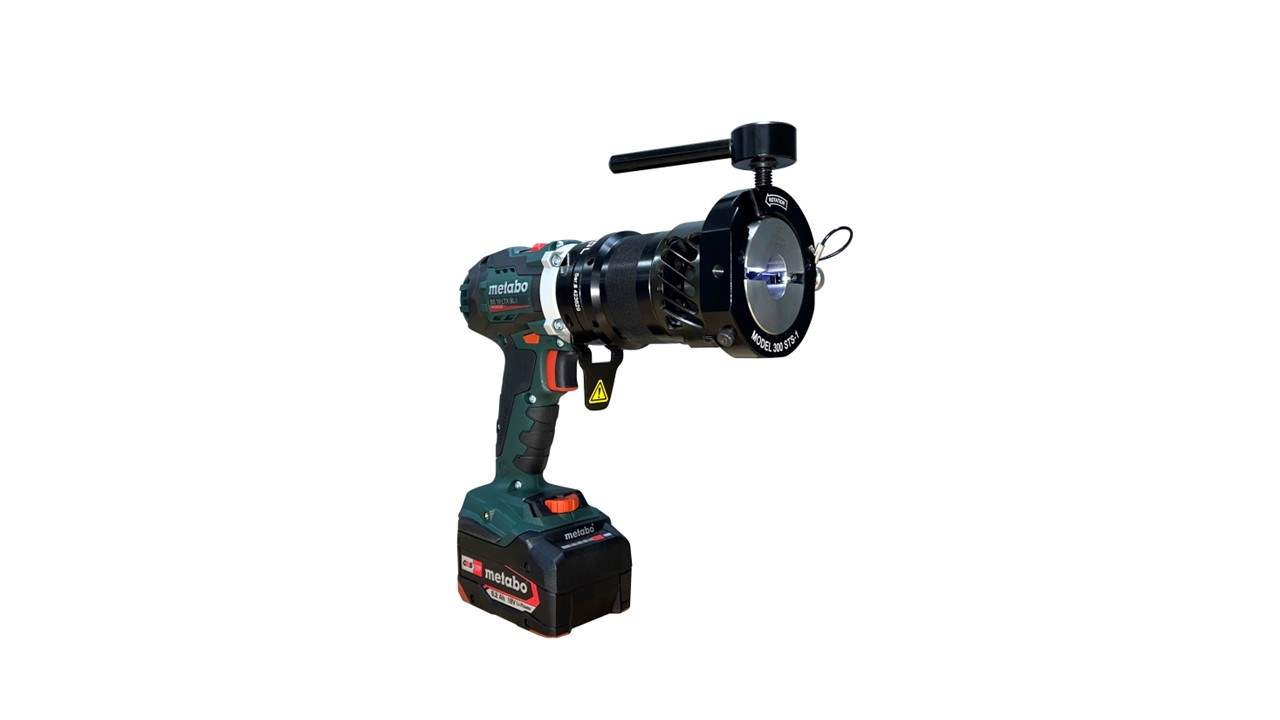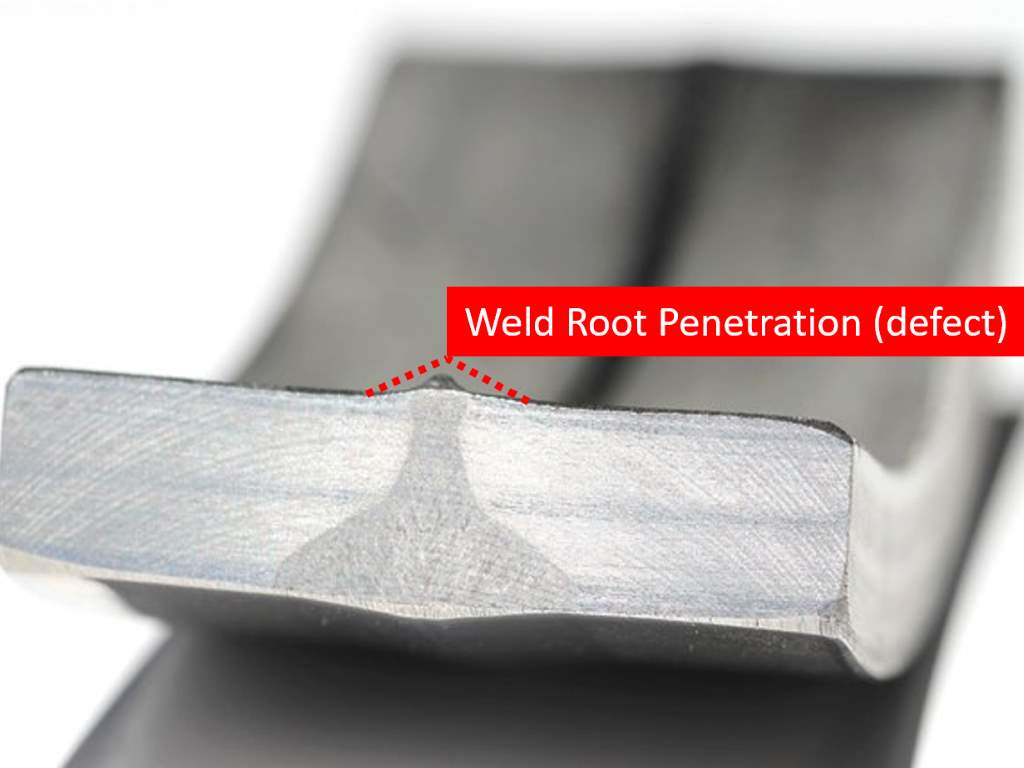Portable weld preparation for aerospace

Like the arteries, veins, and capillaries of the human body, extensive piping and tubing systems deliver essential gases and liquids to critical equipment and systems within space and aircraft, as well as to critical infrastructure such as launch pads.
However, installing or replacing piping and tubing is no small challenge. Aerospace welding is a delicate process that demands precision. Prepping pipe and tube for welding requires very precise, repeatable machining of the ends to very tight tolerances. The cutting and bevelling can create no contaminants and must achieve a specified surface finish. The work is often performed in confined spaces such as tube racks or the wings of an airplane.
The challenge is only increasing as the aerospace industry utilises lighter and stronger materials such as Inconel and other nickel superalloys to improve fuel efficiency and reduce the weight. In addition, pipe and tube welds are subjected to unprecedented high pressures, cryogenic temperatures, and intense environmental stresses such as vibration and thermal cycling.
“Aerospace companies are pushing the boundaries of what can be achieved every day. As a result, they are utilising more advanced materials for piping and tubing, often with smaller diameters, thicker walls, and more complex joint geometries than even ten years ago,” says Chris Belle, CEO of Tri Tool Technologies. Founded in 1972, Tri Tool Technologies is a leading provider of machining tools, custom engineered solutions, and on-site services for the aerospace, defence, power generation, oil and gas, life sciences, and semiconductor industries.
To minimise or eliminate weld failures for these critical applications, the key is achieving very consistent, high-quality weld prep every single time, says Belle.
“The more inconsistent the machining, the more weld process challenges you will have, potentially resulting in weld failures. Unfortunately, materials such as Inconel only increase the chances of joint misalignment, poor prep angles, and contamination,” he explains.
Inconel is an alloy composed of 58% minimum in all weights of nickel with significant chromium and molybdenum. It is extremely resistant to oxidation, corrosion, and scaling in high-temperature environments and so is an ideal material for use in rockets and spacecraft. However, the toughness that makes Inconel such a valuable material also makes it incredibly difficult to machine.
“It is not unheard of for cutting and shaping tools to be broken or deformed when used on Inconel,” explains Belle. “In other cases, its outer layer may harden too quickly in response to machining, resulting in an imperfect shape for the Inconel. Of course, advanced alloys are very expensive, so getting the [weld] prep right the first time is absolutely critical,” adds Belle.
To properly shape, cut, and work with Inconel, the machinist must understand its properties and how to compensate for its limitations. Specialised facing and cutting equipment with tool bits are often required.
“Without all of these components, machining pipe and tube made of advanced materials can become a major bottleneck in the aerospace manufacturing workflow.”
Prepping for welding
Although manual welding techniques are still utilised, particularly for larger pipes, most welding is performed by semi-automated orbital welding machines with closed weld heads. To create the weld, a generated arc is rotated mechanically 360° around the pipe or tubing in a continuous process. Orbital welding is prized in aerospace for producing reliable, high quality, repeatable welds that meet stringent criteria set by organisations such as the American Society of Mechanical Engineers (ASME).
However, there is very little room for error when prepping pipe or tube ends for orbital welding, with little allowance for gaps or non-square surfaces.
“In addition to the specifications from the aerospace company, you also have to meet the requirements of the orbital tube welding machine to create weld joints with a very high success rate,” says Cameron Young, manufacturing solutions engineer at Tri Tool Technologies.
Today, tube and pipe cutting products help ensure the proper fit and alignment of the pieces to be welded to avoid misalignment, gaps, or uneven welds. Most are manually operated and perform machining operations such as cutting, severing, facing, and bevelling.
Facing involves cutting the end of a pipe to achieve a flat and smooth surface with precise dimensions to ensure it can be securely and accurately connected to other components without gaps or leaks. When working with thick pieces of metal, it is often necessary to create a groove or bevel to facilitate proper penetration and fusion during welding.
To further increase productivity without sacrificing precision, field machinists need portable squaring equipment that can be used in tight access areas, such as within tube racks or a wing.
“You need a tool that is compact enough to actually do the prep well but is also still portable that you can bring with you to your work site or take up on the ladder,” says Young.
For production-level tube facing, he points to Tri Tool Technologies’ 300STS, a lightweight, portable facing machine for weld preparation on autogenous welding. The tube squaring tool has an industry-leading 9.5” clearance and can deliver rapid, repeatable, precision cuts within .001” on tubes .125” (3.2mm) - 2.375” (60.5mm) in size, with up to .20” (5.08mm) tube walls.
According to Young, the tool bit plays an outsised role in precision facing and squaring of tube ends. If a tool bit is constructed of an inferior material or excessively hardened, it can result in premature chipping of the cutting edge. When there is little to no helix angle in a tool bit, it can cause severe chatter marks and screeching.
“When performing weld preps on pipe and tubing, you are only as good as your bits,” says Young.
The highest quality bits are designed and given specialty coatings to maximise the number of cuts before cut quality is degraded while producing manageable chips with no signs of heat discoloration, a maximum fine surface finish, and an acceptable amount or no measurable burr. To meet aerospace requirements, the 300STS utilises Tri Tool’s patented Durabits.
“Many of our aerospace customers are using these tools every day, all day,” explains Young. “In high production environments, it is critical that the tool and bits hold up to thousands of preps per month, sometimes thousands per week.”
Added customisation
Given the cutting-edge nature of aerospace applications, customised solutions may also be required. Although standard tube squaring products are available from several sources, most will not make modifications based on customer requests. Tri Tool Technologies, however, can produce variations of standard equipment through modifications and other customisations. This can include integrating controls, sensing technologies, or remote-control technology.
In a recent example, the company modified the 300STS to perform mitre cuts up to 8â° based on a customer request. The ability to make mitre cuts while maintaining the same flatness and surface finish requirements is ideal for adjusting the angles of tubes that don’t precisely fit in preparation for orbital welding.
“To accomplish a 2â° offset, for example, you might face each end with a one-degree angle so they meet up perfectly and the weld head can make the weld because the gap is extremely tight,” explains Young.
Prototypes of the product were introduced at the FABTECH show in September 2023, and Tri Tool Technologies expects to release the mitre model as a standard product in 2024.

A new proprietary Inconel cutting bit also originated from a request from a leading commercial space company building a new launch vehicle platform. To increase efficiency and accelerate project timelines, the company needed to optimise the squaring of difficult-to-machine Inconel tubing. The existing strategy and methods for cutting Inconel were not easily scalable and did not provide the extreme precision, reliability and consistency needed for the project.
When the private space company contacted Tri Tool Technologies, the company’s aerospace fabrication experts immediately recognised the need to develop a proprietary cutting bit specific to the customer’s application. The result was a new cutting bit technology with a proprietary base material, coating, and grind design.
The cutting bit easily machined the Inconel components and created a smooth machined surface. Tri Tool engineers also ensured backward compatibility with the customer’s existing equipment, enabling the company to move forward without redoing other downstream and upstream production processes.
With Tri Tool’s proprietary cutting bit, the leading commercial space company is accelerating production times of their launch vehicle platforms and delivering on-schedule.
Weld root penetration in difficult-to-reach areas can also be a concern. When fabricating a two-part, small diffuser nozzle weldment at their California facility, one of the world’s leading private aerospace manufacturers noticed a small weld root penetration inside the nozzle chamber caused by the arc welding process. If not removed, the weld root penetration would disrupt the flow of fluid and compromise the nozzle’s performance.

Their previous attempts using off-the-shelf handheld tooling to remove the root penetration resulted in inconsistent surface finishes that hampered non-destructive tests on the weld further down in the process. They needed a specially designed tool that could go through the narrow nozzle throat and expand into the nozzle chamber to remove the weld root without damaging any of the surrounding area.
To avoid having to redo the entire fabrication process, the company engineers needed a tool that could reach inside the nozzle and machine the weld root to be flush. Tri Tool was able to design and develop a custom precision micro-boring system to remove the difficult-to-reach weld root penetration based on an existing ID weld profiling system.
With the rapid expansion of private space companies like SpaceX and Blue Origin, the pace of development of next generation spacecraft and aircraft, along with critical support infrastructure, is only increasing. The need is no less great for aircraft manufacturers, for everything from commercial airlines to cargo aircraft and fighter jets.
Fortunately, there are aerospace-specific pipe and tube squaring solutions that can cut, weld, square, and bevel with exacting accuracy, time-saving speed, and field-proven performance. By making the right choices, these tools help ensure the integrity of welds even under the demanding stresses and conditions of next generation air and space systems.













